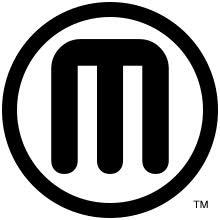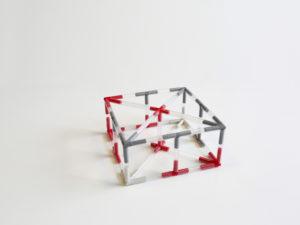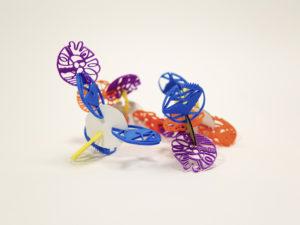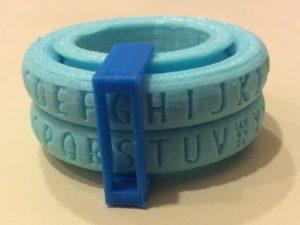Fun, Free 3D Printing ‘Quick Projects’ from Thingiverse Education Provide STEAM Lesson Plans and Teach Students Real World Skills
 It’s the last week of December, which means holiday break has arrived for most schools! The kids are happy because they can sleep in and play with friends, and also because they don’t have to go to school. Having many friends who are teachers, and judging by their relieved Facebook posts this week, I’m willing to bet they’re more excited than their students are to get a little break! Teaching is a tough gig, and I fully maintain that I would never have the patience for it. Depending on the grade level they teach, teachers can be task masters, psychologists, artists (have you seen some of the bulletin boards they make?!), and, oh yes, they also have to teach.
It’s the last week of December, which means holiday break has arrived for most schools! The kids are happy because they can sleep in and play with friends, and also because they don’t have to go to school. Having many friends who are teachers, and judging by their relieved Facebook posts this week, I’m willing to bet they’re more excited than their students are to get a little break! Teaching is a tough gig, and I fully maintain that I would never have the patience for it. Depending on the grade level they teach, teachers can be task masters, psychologists, artists (have you seen some of the bulletin boards they make?!), and, oh yes, they also have to teach.
Being an educator can keep you pretty busy, especially when you’re trying to stay on top of the latest educational tools and offerings, like 3D printing and STEM education. MakerBot, no stranger to developing 3D printers for educational purposes and helping teachers develop STEAM education content, connects educators with the Thingiverse Education community, where they have quick access to easy-to-use educational tools, like these Quick Projects!
 Quick Projects are fun STEAM (science, technology, engineering, art, mathematics) projects that can be used if you’re in a rush to create a 3D printing lesson plan, or new to utilizing the technology in the classroom. The projects teach students real world skills, and the wide variety of available lessons are free, fun, and easy to complete! Each one includes a full lesson plan, step-by-step instructions for a 3D printing project, and is approved for multiple state learning standards. Many of the projects also have, among other things, a grading rubric, reflection questions, and requirement sheets. Interested, but not sure how to dive in? Here are five Thingiverse Education lesson plans that your classroom can complete in two days or less, perfect for that slump we all hit in mid-February.
Quick Projects are fun STEAM (science, technology, engineering, art, mathematics) projects that can be used if you’re in a rush to create a 3D printing lesson plan, or new to utilizing the technology in the classroom. The projects teach students real world skills, and the wide variety of available lessons are free, fun, and easy to complete! Each one includes a full lesson plan, step-by-step instructions for a 3D printing project, and is approved for multiple state learning standards. Many of the projects also have, among other things, a grading rubric, reflection questions, and requirement sheets. Interested, but not sure how to dive in? Here are five Thingiverse Education lesson plans that your classroom can complete in two days or less, perfect for that slump we all hit in mid-February.
If you’ve got a group of budding architecture students, challenge them to design their own buildings in the Speedy Architect Project! Appropriate for students in grades through 3 through 8, the lesson teaches them how to create buildings that meet critical design standards. The students will join drinking straws together using 3D printed connectors to create the structures, and team up together to build the tallest structure they can and race against the clock, with only a limited amount of time and materials. It only takes a couple class periods for students to plan their designs, create their models on Tinkercad, and 3D print their structures. The lesson meets Next Generation Science Standards and not only teaches students to learn how to harness their creativity under professional design constraints, but it’s also a fun preview to more advanced concepts in science and engineering they’ll learn later.
Moving from structures to sculptures, the Art Connector Set SVG Conversion Project teaches budding artists in grades 2 through 8 how to turn their sketches into complex art sculptures. Students will draw shapes within the project’s provided circles, and photograph their original drawings, in order to upload them to a classroom computer as JPEG images, and then convert them into SVG files. They’ll import the SVG files into Tinkercad to design their 3D print files. Once their circles are 3D printed, students can connect each one, in order to create a unique piece of art! This project, which is a great introduction to advanced STEAM thinking, meets National Core Art Standards, for developing their artistic ideas and coming up with different approaches to a design issue. A quick tip: teachers can also use the ShapeMaker feature on the MakerBot PrintShop iPad App to complete this project in fewer steps. Students would still need to take a picture of their drawing and upload the image onto an iPad, but ShapeMaker will convert the image into a customizable, 3D printable CAD file.
Students will use deductive reasoning to help a farmer finish a mission in A Fox, A Goose, and a Bag of Beans Logic Riddle. Students in grades 5 through 8 will try to discover how a farmer can carry his items safely across a river, and 3D print models of the farmer, the fox, the goose, and the bag of beans, to help them act out different scenarios and solutions. This is a quick one, and only takes about 25 minutes to teach students how to tackle proofs later on. Thingiverse designer and educator ereiser has a helpful suggestion for educators: pull out this Quick Project on the first day of school, to get students back in a mathematical mindset.
Speaking of young mathematicians, the Cryptography: Sending Secret Messages lesson can introduce students in grades 3 through 8 to the fascinating world of ciphers and cryptography. This one-day activity meets Common Core State Standards for strategic use of tools and solving math problems. Students will learn how to use ciphers to encode and decode messages on a 3D printed decoder ring. They can send and decode secret messages to other students in the classroom, and discover for themselves why the Vigenère cipher works better than the Caesar cipher.
This last one is more up my alley as an English major: teachers can add nifty design elements to language arts lessons with Book Report Keychains for grades 4 and 5. Students can express their reading comprehension by designing and 3D printing three keychains – one each for three different characters in a book they recently read. Each keychain should have one or more elements of the character’s personality, motivations, or challenges. It meets Common Core State Standards for English and Language Arts, as students can increase their retention, and enjoy their literary 3D printed keepsakes! This lesson takes three to five class sessions, so it’s probably not best to start this one the day before a break.
To find more fast ways to get your students started with 3D printing, or just for a fun activity, check out more Quick Projects in Thingiverse Education! Discuss in the Quick Projects forum at 3DPB.com.
Subscribe to Our Email Newsletter
Stay up-to-date on all the latest news from the 3D printing industry and receive information and offers from third party vendors.
Print Services
Upload your 3D Models and get them printed quickly and efficiently.
You May Also Like
3D Printing News Briefs, July 2, 2025: Copper Alloys, Defense Manufacturing, & More
We’re starting off with metals in today’s 3D Printing News Briefs, as Farsoon has unveiled a large-scale AM solution for copper alloys, and Meltio used its wire-laser metal solution to...
3DPOD 260: John Hart on VulcanForms, MIT, Desktop Metal and More
John Hart is a Professor at MIT; he´s also the director of the Laboratory for Manufacturing and Productivity as well as the director of the Center for Advanced Production Technologies....
3D Printing News Briefs, June 28, 2025: Defense Accelerator, Surgical Models, & More
In this weekend’s 3D Printing News Briefs, 3YOURMIND was selected to join an EU Defense Accelerator, and PTC has announced model-based definition (MBD) capabilities within Onshape. Finally, a study out...
EOS in India: AM’s Rising Star
EOS is doubling down on India. With a growing base of aerospace startups, new government policies, and a massive engineering workforce, India is quickly becoming one of the most important...






































